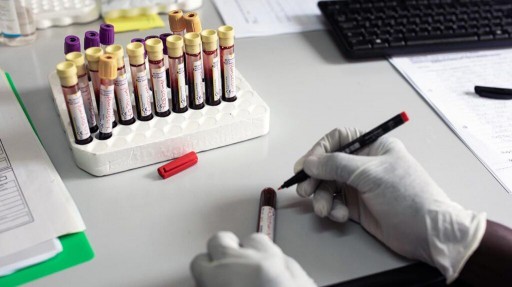
A new global snapshot from UNICEF finds that the burden of HIV is falling disproportionately on adolescent girls and children in some areas of the world.
Children are primarily becoming infected with HIV by contracting it from often adolescent-age mothers, who have acquired the disease as a result of multiple intertwining factors.
Children and adolescents aged 19 years and under account for just 7% of those with HIV, but they make up 15% of those who die from AIDS-related disease.
Overall, the incidence of HIV has fallen from what it once was globally. However, a new and troubling “global snapshot” from UNICEF finds that, for adolescent girls and children in many areas, the crisis persists.
It accounts for the deaths of 99,000 adolescent girls and children from causes related to AIDS, or stage 3 HIV — the most advanced and severe stage of infection with this virus — in 2022.
Particularly affected are adolescent girls and children from birth to 19 years in Eastern and Southern Africa. The areas next most affected are West and Central Africa, East Asia and the Pacific, Latin America and the Caribbean, and South Asia.
“It is unacceptable that adolescent girls, who should be planning their futures, continue to bear the heaviest burden of HIV infection.”
— Anurita Bains, UNICEF associate director of HIV/AIDS, in a press release
Insufficient access to HIV treatment for children
In the affected areas, treatment for younger people falls far behind the options available to adults. Although the 0–19 years age group comprises just 7% of those living with AIDS, they account for 15% of all deaths from the disease.
The report also notes a lack of age-appropriate antiretroviral medication for people in this age group, although this may be changing.
In lower- and middle-income nations, a lack of standardized and readily available testing is hampering attempts to address the crisis. UNICEF also describes a cumbersome diagnostic process for the young as holding back efforts to help those infected with HIV.
UNICEF says this is among the reasons that just 57% of those aged 0–14 years are receiving retroviral treatment, compared to the 77% of older adolescents from 15 to 19 who are. Half of those not receiving treatment live in Eastern and Southern Africa.
Why is HIV on the rise among young girls?
She told us that “[a]dolescent girls and young women in sub-Saharan Africa are much more likely to acquire HIV than their male peers due to multiple interrelated risk factors which contribute to increased vulnerability.”
According to her, these factors include:
early start to their sexual life
intergenerational sexual relationships
high socioeconomic vulnerability
transactional sex
early marriages
low levels of education and schooling
gender-related power imbalances and violence
a lack of availability of adolescent and youth-responsive services.
HIV among adolescent girls and young women from 10 to 24 years of age is over three times higher than among males of the same age, says the UNICEF snapshot.
“Young women,” said Dr. Vasylyeva, “are at higher risk for HIV than other groups in Southern African countries.” She cited “partners who are decades older in age, and thus have longer lifetime exposure to HIV.”
Arney further noted that:
“Even where appropriate and respectful sexual and reproductive health services exist, adolescent girls and young women are often unaware of available services, unable to access due to distance or clinic hours, or afraid to seek care because of concerns around confidentiality or judgement and poor treatment by providers who may disapprove of them engaging in sex.”
Even where educational opportunities exist, said Dr. Caterina Casalini, senior technical advisor in Clinical Services at FHI 360, not involved in the report, “[s]chool commitment, communication with schoolteachers and negative teacher attitudes also play a deterring role in disclosing HIV status and accessing treatment.”
“Poor access to sex education and reproductive care also contribute to young women’s vulnerabilities to HIV,” added Dr. Vasylyeva.
Once in care, however, “women [in Southern African countries] are actually generally better at staying in care and thus be virally suppressed once diagnosed,” she noted.
HIV in children
The World Health Organization (WHO)that there were an estimated 1.8 million children aged 0–14 years living with HIV at the end of 2019, with 150,000 children newly infected.
Without better access to diagnoses and treatment, says the WHO, 50% of children with HIV will die before they are 2 years old, with 80% not living to see their fifth birthday.
HIV hits children particularly hard, since their young immune systems cannot fight infections as well as those of adults can.
These children experience various subsequent health issues, including ear and sinus infections, sepsis, pneumonias, tuberculosis, urinary tract infections, intestinal illness, skin disease, and meningitis.
The WHO recommends that infants born to mothers living with HIV should be tested by 2 months of age, during breastfeeding, and also when the breastfeeding phase ends, considering the continued transmission risk.
Strategies to fight childhood HIV
According to Dr. Casalini, decentralized treatment distribution and remote or virtual service delivery strategies have proven to be successful.
However, “often solutions are not implemented at scale, neither with fidelity nor systematically, and countries are challenged with insufficient resources to tackle the gaps along the HIV cascade and the need to find efficiencies when prioritizing adolescent girls,” she told us.
Nevertheless, Dr. Casalini noted a bright spot on the horizon:(DTG), which has shown promise in trials and can be administered to HIV patients just 4 weeks old.
There are, Dr. Casalini said, “[p]romising real-world data among children and adolescents living with HIV aged 0–19 years old who received DTG from 2017 to 2020 in six Eastern and Southern Africa (Botswana, Eswatini, Lesotho, Malawi, Tanzania, and Uganda).”
Dr. Vasylyeva added that “[t]reatment remains the best prevention strategy, as it reduces ‘community viral load since ‘undetectable [means] untransmittable.’”
“People in treatment cannot transmit HIV to their partners,” she emphasized.